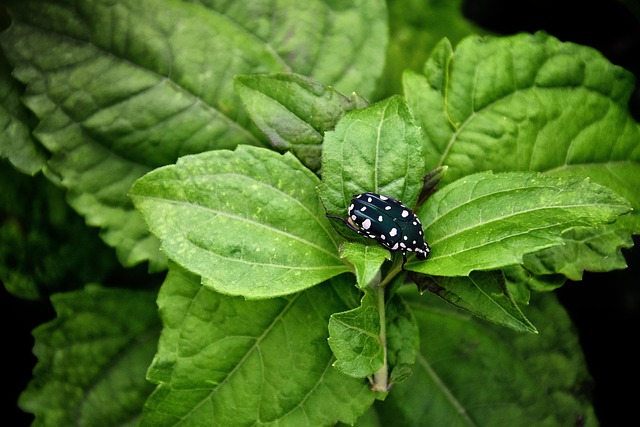A Culinary Journey: Vignette Austria’s Gastronomic Delights
Austria, a country renowned for its stunning alpine landscapes and rich history, also boasts a culinary heritage that is as diverse as its beautiful scenery. From the picturesque streets of Vienna to the quaint villages nestled in the valleys of the Tyrol, Austrian cuisine tells the story of its people, their traditions, and their love of hearty, flavorful food. This article embarks on a culinary journey through Austria, exploring its gastronomic delights that reflect both its regional diversity and historical influences.
Austrian Cuisine: An Overview
Austrian gastronomy has been shaped by centuries of cultural exchange and migration, particularly due to the Austro-Hungarian Empire, which at one time encompassed numerous Central and Eastern European nations. The result is a melting pot of flavors and influences, where hearty rural fare meets the finesse of imperial kitchens.
At its core, Austrian cuisine is characterized by its use of fresh, local ingredients and traditional cooking methods. The meals are comforting and substantial, often centered around meats, potatoes, and seasonal vegetables. Bread plays a significant role in Austrian meals, with various regional specialties reflecting the local grains and baking techniques.
Regional Delights
Vienna: The Heart of Culinary Innovation
Vienna, the capital city, is a hub of culinary innovation. Its cafés, famously rich in history, not only serve coffee but also a selection of delectable pastries that have made the city a sweet-toothed paradise. The renowned Sacher Torte, a chocolate cake layered with apricot jam and adorned with a dark chocolate glaze, is a must-try delicacy that originated from the Hotel Sacher. It exemplifies the city’s legendary pastry scene, where other delicacies like Apfelstrudel and Sachertorte take center stage.
Beyond pastries, Vienna’s restaurant culture is vibrant and varied. One can indulge in traditional Viennese dishes like Wiener Schnitzel, a breaded and fried veal cutlet that has become synonymous with the city’s culinary identity. Served with a lemon wedge and a side of potato salad, it has its own ritual that embodies Austrian dining philosophy—hearty, sumptuous, and fulfilling.
Salzburg: Taste of the Alps
Traveling to Salzburg, a city surrounded by the Alps, one finds a cuisine that reflects its mountainous surroundings. The region prides itself on its cheese, particularly from the alpine pastures. Cheese fundamental to Salzburg includes varieties like Salzburger Almkäse and handmade soft cheeses that are best enjoyed with fresh bread and local charcuterie.
Another signature dish from this region is the hearty ‘Speckknödel,’ a type of dumpling made from bread and filled with smoky bacon. Often served in a flavorful broth or alongside a dish of sauerkraut, this meal demonstrates the rich, comforting nature of Salzburg’s culinary practices. Moreover, seasonal ingredients such as mushrooms and game lend their unique character to local menus, enhancing the overall taste experience.
Tyrol: Hearty and Rustic
In Tyrol, the cuisine takes a rustic turn, reflective of the region’s agricultural roots. Hearty meals dominate, with ingredients like barley, potatoes, and locally sourced meats at the fore. One cannot visit Tyrol without sampling ‘Tiroler Gröstl,’ a fried potato dish typically made with leftover roast beef, onions, and topped with a fried egg—a true testament to the resourcefulness of alpine cooking.
Additionally, the beloved ‘Schlutzkrapfen,’ a type of filled pasta, is often served with hearty sauces, embodying the region’s comfort food ethos. Tyrolean cuisine emphasizes simple but substantial flavors, reflecting the lifestyle of its inhabitants who have historically relied on their land for sustenance.
Burgenland: A Taste of Tradition
Moving eastward to Burgenland, one finds a culinary landscape influenced by its proximity to Hungary. Here, dishes often feature paprika and spices that bring an exciting flavor dimension to traditional Austrian cooking. One of the region’s signature dishes is ‘Burgenland Beuschl,’ a hearty stew made from various meats and internal organs, seasoned with aromatic herbs and spices.
This area is also celebrated for its wines, particularly those made from the indigenous varieties such as ‘Zweigelt’ and ‘Welschriesling.’ Wine is not just a drink in Burgenland; it is part of the dining experience, often served alongside the locally inspired meals, creating an enduring bond between food and drink.
Austrian Beverages: More than Just Wine
Austria’s beverage culture is as rich as its food scenery. While Austrian wines, especially from regions like Wachau and Kamptal, are increasingly gaining international acclaim, it is the beer culture that merits special attention. Austria boasts a proud brewing history, with numerous traditional breweries producing world-class lagers and ales.
In addition to beer, the country is known for its high-quality spirits. Schnaps, a fruit brandy, is made from a variety of fruits, including pears, apples, and plums, capturing the essence of the Austrian countryside in each glass. For a true taste of the region, enjoying a drink at a local tavern alongside traditional dishes encapsulates the warmth of Austrian hospitality.
The Fusion of Tradition and Modernity
Austria’s culinary scene today continues to evolve, with many chefs embracing innovative techniques while remaining rooted in tradition. Farm-to-table dining experiences have gained popularity, emphasizing the use of local and seasonal ingredients. Many restaurants now create modern interpretations of classic dishes, merging comfort with creativity.
This evolution is most apparent in cities like Vienna and Graz, where vibrant scenes attract culinary adventurers seeking both traditional taverns and avant-garde eateries. Gourmet culinary festivals celebrate this fusion, showcasing local chefs who are redefining Austrian cuisine, ensuring it remains exciting and relevant on the global gastronomic stage.
Culinary Experiences: Beyond the Plate
A culinary journey in Austria is not solely about food; it is an experience steeped in culture and tradition. Cooking classes will allow visitors to learn how to prepare famous dishes like Wiener Schnitzel or Sachertorte, diving deeper into the art of Austrian cuisine. Wine tours in the Wachau valley offer an educational peek at the winemaking process while allowing guests to taste the very grapes that flourish in this historic landscape.
Festivals celebrating local produce and culinary traditions create an immersive experience for travelers. From traditional Christmas markets serving mulled wine and sweet treats to harvest festivals showcasing regional foods, these events are not just about what is on the plate, but the stories and traditions woven into each meal.
Conclusion: A Journey Worth Taking
A culinary journey through Austria is a delight for the senses, weaving together flavors, traditions, and stories that exemplify the country’s vibrant heritage. From hearty, rustic mountain fare to sophisticated dishes that reflect the influence of a grand imperial past, the landscape of Austrian cuisine offers something for everyone.
The pleasures of travel extend far beyond beautiful vistas; they lie within the experiences had at the table, the warmth of shared meals, and the understanding forged between cultures through food. As you venture through the varied regions of Austria, each bite promises to unveil a piece of the country’s rich tapestry—a true gastronomic delight that resonates long after the journey ends.


